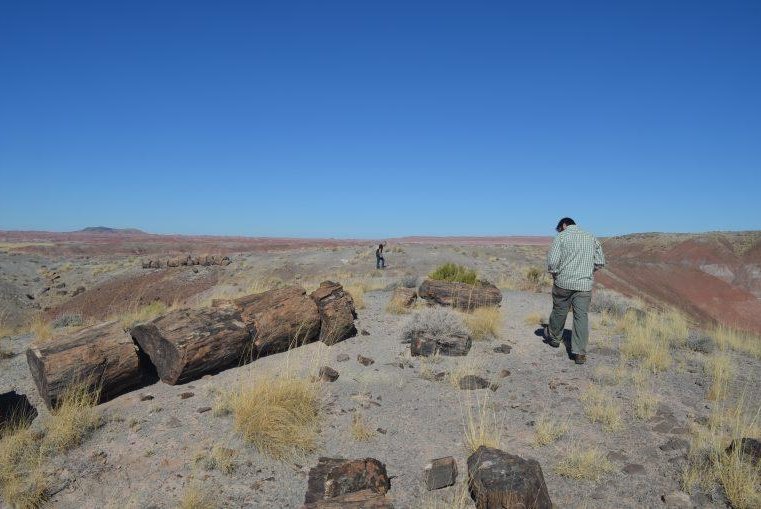
Old-growth forest on Barro Colorado Island, in Panama, hosts 300 tree species. Photo by Christian Ziegler/UT-Austin
April 10 (UPI) -- Trees that grow fast, live long and reproduce slowly, known as long-lived pioneers, store the majority of carbon found in tropical forests.
Scientists arrived at their discovery after analyzing the different development strategies used by various tree species.
"In an earlier study we found that trees pursue different strategies during their development, and those strategies can be classified according to two independent criteria," lead study author Nadja Rüger, a scientist with the German Center for Integrative Biodiversity Research, told UPI.
Some tree species, scientists found, grow fast and die young. Other species grow slow and reach old age. Different tree species also achieve different statures.
Fertility also influences a trees' development pattern. Some trees grow big and tall but are limited in their reproductive abilities. Smaller species like shrubs can reproduce in great numbers, but they fail to get very big.
Long-lived pioneers are a unique group. They grow fast, helping to pioneer new patches of forest. But they also grow old, allowing them to reach great stature. There are trade-offs, of course. Long-lived pioneers, or infertile giants, produce only small numbers of offspring.
To better understand how the different characteristics of tree species influence the formation, composition and evolution of tropical forests, scientists plugged data on growth rates, longevity, stature and fertility into sophisticated computer models.
"We discovered that the nearly 300 unique tree species can be represented in our computer model by just five functional groups and still produce accurate forecasts of tree composition and forest biomass over time," study co-author Caroline Farrior, assistant professor of integrative biology at the University of Texas at Austin, told UPI.
The models showed long-lived pioneers account for a majority of a forest's biomass and carbon storage.
The research -- published this week in the journal Science -- could be used to craft more effective conservation plans, and to prioritize the protection for forests with larger numbers of long-lived pioneers.
When studying forest development and composition in the past, scientists focused mostly on the trade-off between growth and survival -- grow fast and die young, or grow slow and grow old. But the latest analysis showed that balancing the trade-off between stature and reproduction is just as important.
For the most recent study, scientists utilized tree data meticulously collected from dense forests on Barro Colorado Island in Panama. Researchers are currently working to see if they can repeat their predictive modeling efforts for forests that haven't already been extensively studied by scientists.
"One of our goals is to extend this approach to forests with less complete data, very young secondary forests and tropical dry forests," Rüger said. "If this succeeds, it will be much easier than today to scientifically support renaturation projects and sustainable timber use in tropical forests, and also, of course, to estimate how effectively re-growing forests contribute to carbon storage and, therefore, to climate mitigation."

















 September 1945, a little-remembered frenzy erupted in the United States. Japan had surrendered, ending World War II, but American meat packers, steelworkers, telephone installers, telegraph operators, and auto assemblers had something different from partying in mind. In rolling actions, they went on strike. After years of patriotic silence on the home front, these workers, along with unhappy roughnecks, lumberjacks, railroad engineers, and elevator operators — some 6 million workers in all — shut down their industries and some entire cities. Mainly they were seeking higher pay — and they got it,
September 1945, a little-remembered frenzy erupted in the United States. Japan had surrendered, ending World War II, but American meat packers, steelworkers, telephone installers, telegraph operators, and auto assemblers had something different from partying in mind. In rolling actions, they went on strike. After years of patriotic silence on the home front, these workers, along with unhappy roughnecks, lumberjacks, railroad engineers, and elevator operators — some 6 million workers in all — shut down their industries and some entire cities. Mainly they were seeking higher pay — and they got it, 


 Tragic stories are part of what is giving new labor its resonance, like that of
Tragic stories are part of what is giving new labor its resonance, like that of 

 Ifcorporate America does face a post-Covid-19 reckoning from workers, the gig economy seems like one of the top probable targets. Jim Chanos, president of Kynikos Associates, a hedge fund that shorts stocks, was made famous in the early 1990s for
Ifcorporate America does face a post-Covid-19 reckoning from workers, the gig economy seems like one of the top probable targets. Jim Chanos, president of Kynikos Associates, a hedge fund that shorts stocks, was made famous in the early 1990s for 

